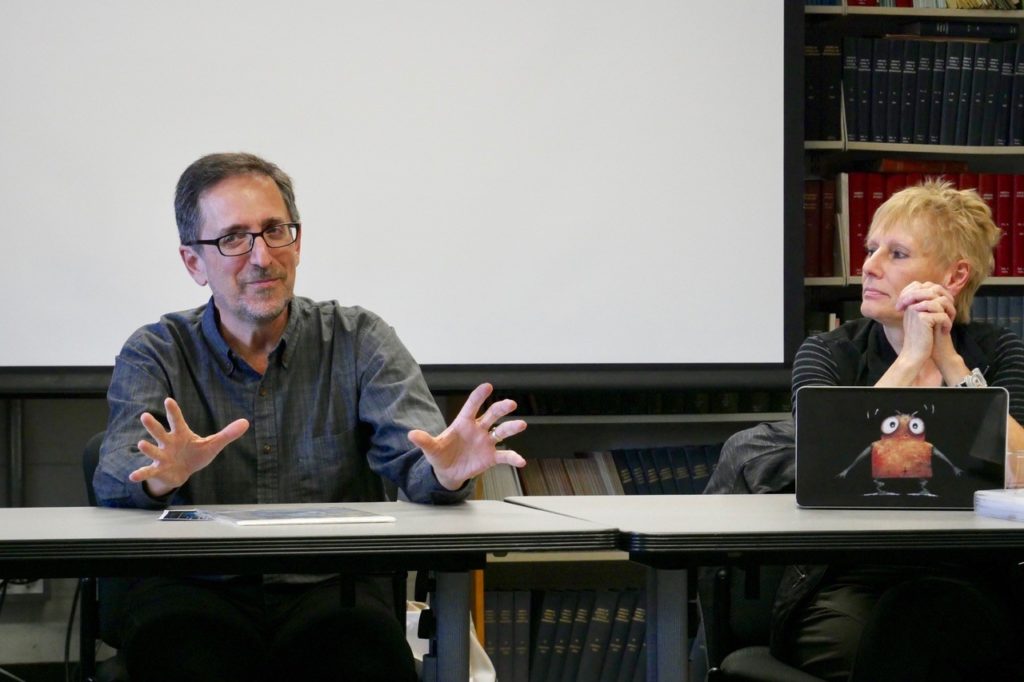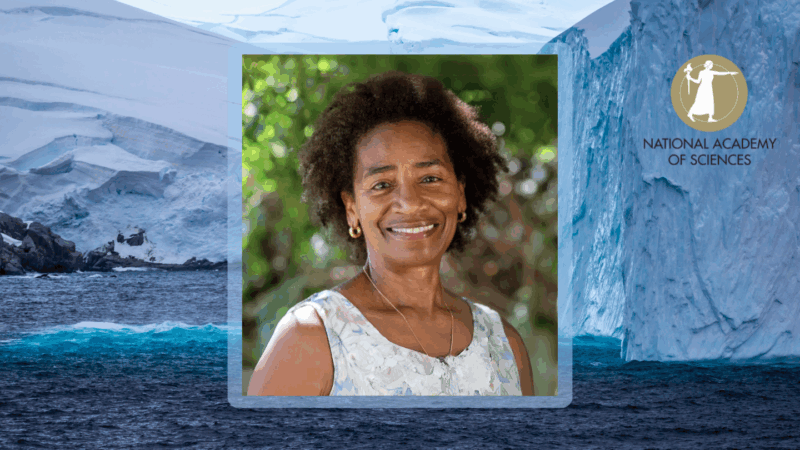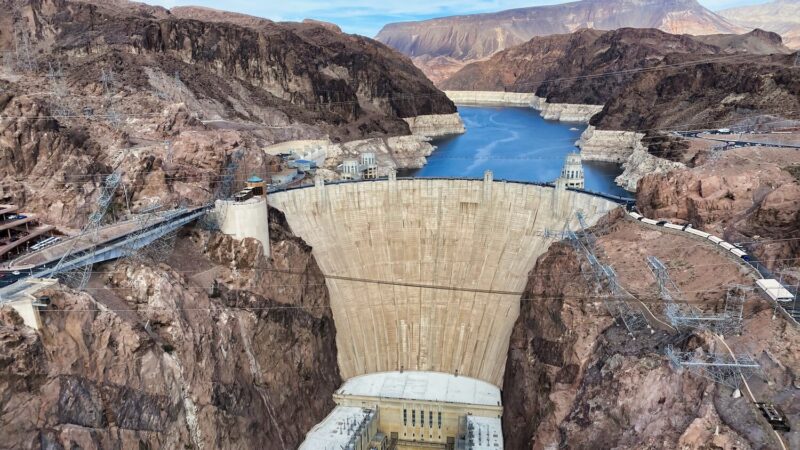
N.Y. Times’ Andrew Revkin on climate change, adaptation and aliens
Award-winning journalist Andy Revkin joined LENS for an intimate look at his evolution of environmental thinking and some potential outcomes for life on Earth.
After 30 years of environment writing, Andrew Revkin still finds ways to challenge his thinking.
The award-winning author and founder of the New York Times’ Dot Earth blog recently visited UCLA for a conversation hosted by LENS—the Laboratory for Environmental Narrative Strategies. The wide-ranging discussion touched everything from Peruvian agriculture to science fiction, but a common thread emerged: exploring new, diverse and even uncomfortable ideas could be crucial for people to successfully adapt to our rapidly changing planet.
Revkin compared the concept to ecosystem resilience, recalling a scientific paper he once read on the subject. The paper concluded that resilience is, in large part, a product of the diversity of ways species respond and function within an ecosystem. Likewise, a broad range of ideas and approaches to environmental problems will be more likely to result in effective solutions.
“You can just put in ‘social system’ instead of ‘ecosystem,’ ” Revkin said. “No one really knows which technological or social innovation is going to work out. Having dynamic tension in a society is fundamentally adaptive.”
That philosophy comes with one big caveat, he said—it is contingent on a level playing field, and that’s not always the case. “When it comes to climate policy and energy needs, there is no ‘we,’ ” he said. Relatively well-off countries and environmentally progressive countries such as Singapore experience climate change much differently than the slums of Nairobi, Kenya.
Another evolution in Revkin’s thinking occurred in 2006 with the release of Al Gore’s landmark documentary An Inconvenient Truth. The film raised the profile of global warming and its dire consequences, but public opinion on the topic became inflamed and increasingly polarized. Revkin shifted his focus from geophysics and policy to behavioral sciences to better understand how people respond and interact with environmental data and communications. “I’d been writing books and magazine articles presuming that if I just told the story more effectively, then people would go ‘a-ha,’ ” Revkin said. “Many scientists have the same expectation.”
Jon Christensen and Ursula Heise of LENS invited Revkin to explore storytelling in the Anthropocene Epoch, a proposed geologic age in which human activity has been the dominant influence on the climate and environment. LENS explores strategies for developing new environmental narratives—which involves understanding how they’ve evolved so far.
After three decades of reporting, a gloomy outlook might be excused—there has been no dearth of tough news on climate, conservation and the preservation of natural resources. Revkin said he has come to terms with much of it. “A lot of letting go has happened for me. Most of us feel bad about climate change because it has a lot of the same qualities as death. A lot of it is inevitable. There’s no quick fix.”
Lately, Revkin has been thinking about aliens. More accurately, he’s been talking to astrobiologists, who study life on earth and in space. He brought up Fermi’s paradox, which was named after the physicist Enrico Fermi. It notes the contradiction that, while there is a strong likelihood that intelligent extraterrestrial life exists given the vastness and physical characteristics of the universe, things remain relatively quiet—there is a lack of contact or evidence that extraterrestrial intelligence exists.
Revkin brought up two possible answers to the paradox. First, he said, intelligence itself may be maladapted to long-term survival. E.g., our ability to come up with new stuff will always outpace our capacity to understand its implications. On the other hand, there’s the idea that “when you get smart, you get quiet.” In that second explanation, he sees a glimmer of hope.
“Modeling shows projections where, by 2300, we get to a world where there are one billion prosperous people and tons of room for nature, but no calamity between now and then. That’s totally doable. It mostly has to do with access to education for girls so fertility rates decline faster. So suppose there’s this culture that gets through this bump, survives the waves crashing on the beach, and then they go small. They go quiet.”
Such far out—yet oddly practical—thinking is in line with what Revkin believes may create better outcomes for human adaptation. He no longer focuses on numerical goals like reducing atmospheric carbon dioxide to 350 parts per million or reaching 80 percent renewable energy by 2050, but that doesn’t mean he’s left hard science behind. When writing and researching, he gravitates toward those who challenge their own ideas. “I always look for that in scientists,” he said. “The people I pay attention to are the people with open minds.”




